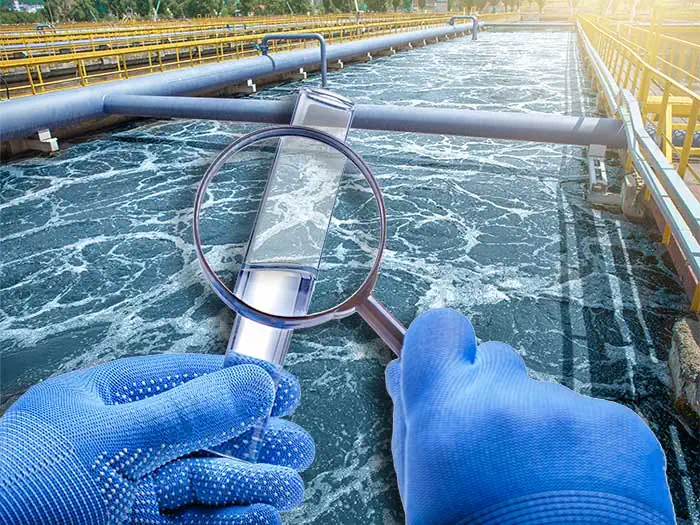How M270 Waste Management Help in the Safe Disposal of Hazardous Materials
Cutting-edge PFAS Therapy Solutions for Safer Water
The enhancing prevalence of PFAS contamination in water products necessitates a critical assessment of cutting-edge therapy options. Advanced purification modern technologies and novel chemical therapies present promising methods for decreasing these persistent pollutants. In addition, emerging bioremediation techniques offer a more sustainable technique to dealing with PFAS challenges. As regulative frameworks continue to adapt, comprehending the efficiency and scalability of these services becomes critical. What implications do these developments hold for public health and wellness and ecological reconstruction, and just how can stakeholders effectively execute them in diverse contexts?
Overview of PFAS Contamination
PFAS contamination has become a considerable ecological and public wellness concern. Per- and polyfluoroalkyl substances (PFAS) are a group of artificial chemicals understood for their perseverance in the environment and human body, leading them to be frequently described as "for life chemicals." These substances have been extensively used in different industries, including firefighting foams, water-repellent materials, and food packaging, mainly as a result of their water- and grease-resistant homes.
The widespread use of PFAS has led to their discovery in dirt, water supplies, and even in the blood of human beings and pets. Studies have linked PFAS direct exposure to countless health problems, consisting of developing results in infants, immune system disorder, and numerous kinds of cancer cells. Furthermore, the ecological determination of these compounds complicates their deterioration and elimination, increasing worries about long-lasting environmental influences.
Regulatory bodies are progressively carrying out rigid guidelines to monitor and lower PFAS degrees in drinking water and various other environmental mediums. As awareness of PFAS contamination grows, it has become imperative for communities and industries to seek effective therapy remedies to reduce exposure and safeguard public wellness.
Advanced Filtering Technologies
As the necessity to address PFAS contamination heightens, advanced filtering innovations have become a pivotal element in the remediation initiatives targeted at eliminating these consistent chemicals from water resources. These technologies utilize innovative systems to effectively target and record PFAS compounds, which are infamously resistant to traditional treatment methods.
One of one of the most encouraging strategies is making use of granular turned on carbon (GAC), which adsorbs PFAS particles due to its high area and permeable structure. This approach has actually been widely implemented in both municipal and commercial settings, demonstrating substantial decreases in PFAS focus. In addition, ion exchange materials have actually obtained grip, particularly created to uniquely bind PFAS ions from water, therefore promoting their removal.
Membrane filtration innovations, such as reverse osmosis and nanofiltration, also reveal effectiveness in PFAS elimination by literally dividing impurities from water - pfas management. These systems can attain high degrees of purity, making them suitable for drinking water applications
Chemical Therapy Developments
Various chemical treatment advancements are being checked out to effectively attend to PFAS contamination in water materials. One promising approach involves the usage of innovative oxidation procedures (AOPs), which utilize powerful oxidants such as ozone, hydrogen peroxide, or chlorine dioxide combined with UV light to damage down PFAS substances into less hazardous substances. This approach has demonstrated efficacy in laboratory settings, revealing possible for scalability in real-world applications.
One more ingenious strategy is the development of ion-exchange materials particularly created to target PFAS. These resins can uniquely adsorb PFAS substances from water, permitting their removal throughout therapy processes. Recent developments have improved the efficiency and capacity of these materials, making them a favorable option for water therapy centers.
Additionally, scientists are investigating the usage of chemical representatives like persulfate and ferrous ions to boost the destruction of PFAS in infected water. These representatives can generate chemical responses that facilitate the break down of persistent PFAS compounds.
Arising Bioremediation Strategies
Recent developments in chemical therapy technologies have actually led the way for exploring bioremediation methods as a feasible choice for resolving PFAS contamination. Bioremediation utilizes the all-natural metabolic processes of bacteria to deteriorate or transform pollutants, making it an enticing technique for see this dealing with consistent impurities like PFAS.
Arising strategies in bioremediation consist of the usage of genetically crafted microbes that can particularly target and break down PFAS substances. These microbial pressures are being established for their enhanced destruction capabilities, boosting the performance of the remediation process. Additionally, scientists are exploring the capacity of plant-assisted bioremediation, where specific plant types may uptake and sequester PFAS from infected soil and water.
One more encouraging approach is the application of bioaugmentation, which entails presenting advantageous bacteria into contaminated settings to improve the degradation of PFAS. This approach can promote much faster removal timelines and improve total efficiency.

Regulatory Structures and Requirements
A thorough regulative structure is vital for successfully managing look here PFAS contamination and ensuring public health defense. The boosting recognition of per- and polyfluoroalkyl materials (PFAS) as toxic wastes has actually triggered various government and state companies to develop standards that govern their presence in water products. The United State Environmental Defense Agency (EPA) has actually developed wellness advisories and is working toward setting enforceable limits for PFAS in drinking water.
State-level regulations vary substantially, with some states taking on more stringent standards than those recommended by the EPA. These regulations frequently include maximum impurity levels (MCLs) for particular PFAS compounds, tracking needs, and reporting obligations for water energies. Furthermore, emerging structures concentrate on the remediation of contaminated websites, stressing the requirement for efficient treatment technologies.

Final Thought
To conclude, the development and application of ingenious PFAS treatment services are important for dealing here are the findings with the prevalent concern of water contamination. Advanced filtering innovations, chemical treatments, and emerging bioremediation methods jointly present a diverse technique to properly reduce and degrade PFAS levels. As governing structures remain to develop, integrating these innovations will certainly be important to guard public wellness and restore the stability of contaminated water sources, eventually adding to a cleaner and more secure environment.